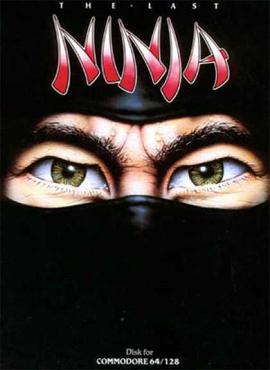
Amiga is a family of personal computers introduced by Commodore in 1985. The original model is one of a number of mid-1980s computers with 16- or 16/32-bit processors, 256 KB or more of RAM, mouse-based GUIs, and significantly improved graphics and audio compared to previous 8-bit systems. These systems include the Atari ST—released earlier the same year—as well as the Macintosh and Acorn Archimedes. Based on the Motorola 68000 microprocessor, the Amiga differs from its contemporaries through the inclusion of custom hardware to accelerate graphics and sound, including sprites and a blitter, and a pre-emptive multitasking operating system called AmigaOS.

Virtual reality (VR) is a simulated experience that employs pose tracking and 3D near-eye displays to give the user an immersive feel of a virtual world. Applications of virtual reality include entertainment, education and business. Other distinct types of VR-style technology include augmented reality and mixed reality, sometimes referred to as extended reality or XR, although definitions are currently changing due to the nascence of the industry.

Deluxe Paint, often referred to as DPaint, is a bitmap graphics editor created by Dan Silva for Electronic Arts and published for the then-new Amiga 1000 in November 1985. A series of updated versions followed, some of which were ported to other platforms. An MS-DOS release with support for the 256 color VGA standard became popular for creating pixel graphics in video games in the 1990s.

LightWave 3D is a 3D computer graphics program developed by NewTek. It has been used in films, television, motion graphics, digital matte painting, visual effects, video game development, product design, architectural visualizations, virtual production, music videos, pre-visualizations and advertising.
COLLADA is an interchange file format for interactive 3D applications. It is managed by the nonprofit technology consortium, the Khronos Group, and has been adopted by ISO as a publicly available specification, ISO/PAS 17506.

In computing, a virtual desktop is a term used with respect to user interfaces, usually within the WIMP paradigm, to describe ways in which the virtual space of a computer's desktop environment is expanded beyond the physical limits of the screen's display area through the use of software. This compensates limits of the desktop area and is helpful in reducing clutter of running graphical applications.

The Virtual Theatre is a computer game engine designed by Revolution Software to produce adventure games for computer platforms. The engine allowed their team to script events, and move animated sprites against a drawn background with moving elements using a point-and-click style interface. Upon its first release, it rivaled competing engines like LucasArts' SCUMM and Sierra's Creative Interpreter, due to its then high level of artificial intelligence. The engine was first proposed in 1989, while the first game to use it, Lure of the Temptress, was released in 1992, followed by Beneath a Steel Sky (1994), Broken Sword: The Shadow of the Templars (1996) and Broken Sword II: The Smoking Mirror (1997).

Dark Seed is a psychological horror point-and-click adventure game developed and published by Cyberdreams in 1992. It exhibits a normal world and a dark world counterpart, which is based on artwork by H. R. Giger. It was one of the first point-and-click adventure games to use high-resolution graphics, to Giger's demand. A sequel, Dark Seed II, was released in 1995.
SketchUp is a suite of subscription products that include SketchUp Pro Desktop, a 3D modeling Computer-Aided Design (CAD) program for a broad range of drawing and design applications — including architectural, interior design, industrial and product design, landscape architecture, civil and mechanical engineering, theater, film and video game development.
Freescape is a video game engine, an early 3D game engine used in video games such as 1987's Driller. Graphics were composed mostly of solid geometry rendered without shading.
Amiga software is computer software engineered to run on the Amiga personal computer. Amiga software covers many applications, including productivity, digital art, games, commercial, freeware and hobbyist products. The market was active in the late 1980s and early 1990s but then dwindled. Most Amiga products were originally created directly for the Amiga computer, and were not ported from other platforms.

The Last Ninja is an action-adventure game originally developed and published by System 3 in 1987 for the Commodore 64. It was converted to the Apple IIGS, MS-DOS, BBC Micro, and Acorn Electron in 1988, the Apple II series in 1989, the Amiga, and Atari ST in 1990, and the Acorn Archimedes in 1991.

3D Construction Kit, also known as 3D Virtual Studio, is a utility for creating 3D worlds in Freescape. Developed by Incentive Software and published by Domark, it was released in 1991 on multiple platforms. The game originally retailed for £24.99 for the 8-bit version, and £49.99 for 16-bit version and the 32-bit Acorn Archimedes version, in the United Kingdom. A sequel, 3D Construction Kit II, was released in 1992, but only available on Amiga, Atari ST and MS-DOS.
Incentive Software Ltd. was a British video game developer and publisher founded by Ian Andrew in 1983. Programmers included Sean Ellis, Stephen Northcott and Ian's brother Chris Andrew.
This article deals with productivity software created for the Amiga line of computers and covers the AmigaOS operating system and its derivates AROS and MorphOS and is a split of main article Amiga software. See also related articles Amiga Internet and communications software, Amiga music software, Amiga programming languages, and Amiga support and maintenance software for other information regarding software that run on Amiga.

ARToolKit is an open-source computer tracking library for creation of strong augmented reality applications that overlay virtual imagery on the real world. Currently, it is maintained as an open-source project hosted on GitHub. ARToolKit is a very widely used AR tracking library with over 160,000 downloads on its last public release in 2004.

Blue Mars, a 3D massively multiplayer virtual world platform developed by Hawaii-based Avatar Reality, allows 3rd parties to create virtual worlds, MMOG games, simulations, shops, businesses, entertainment venues, clothing, custom avatars, furniture, virtual homes, and other items. It consists of four main parts: the client software, the Sandbox Editor SDK suite, the website, and the host servers. It is often compared to Second Life, since both are virtual social worlds allowing user-created content. According to Jim Sink, CEO of Avatar Reality, "Blue Mars was inspired by a vision of the future when the power to terraform whole worlds is within our grasp. The name Blue Mars represents possibility and hope."

AmigaOS is a family of proprietary native operating systems of the Amiga and AmigaOne personal computers. It was developed first by Commodore International and introduced with the launch of the first Amiga, the Amiga 1000, in 1985. Early versions of AmigaOS required the Motorola 68000 series of 16-bit and 32-bit microprocessors. Later versions were developed by Haage & Partner and then Hyperion Entertainment. A PowerPC microprocessor is required for the most recent release, AmigaOS 4.











